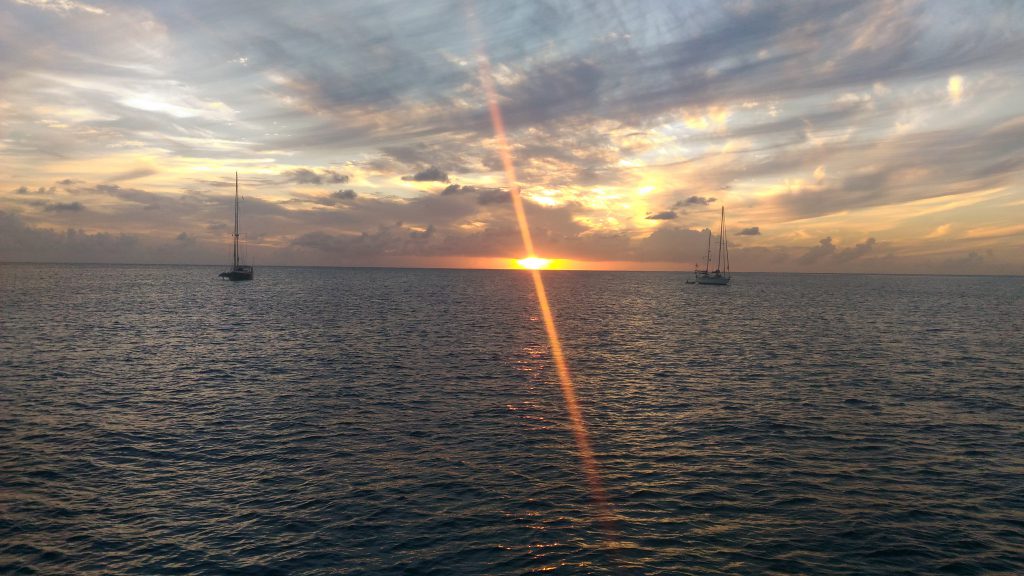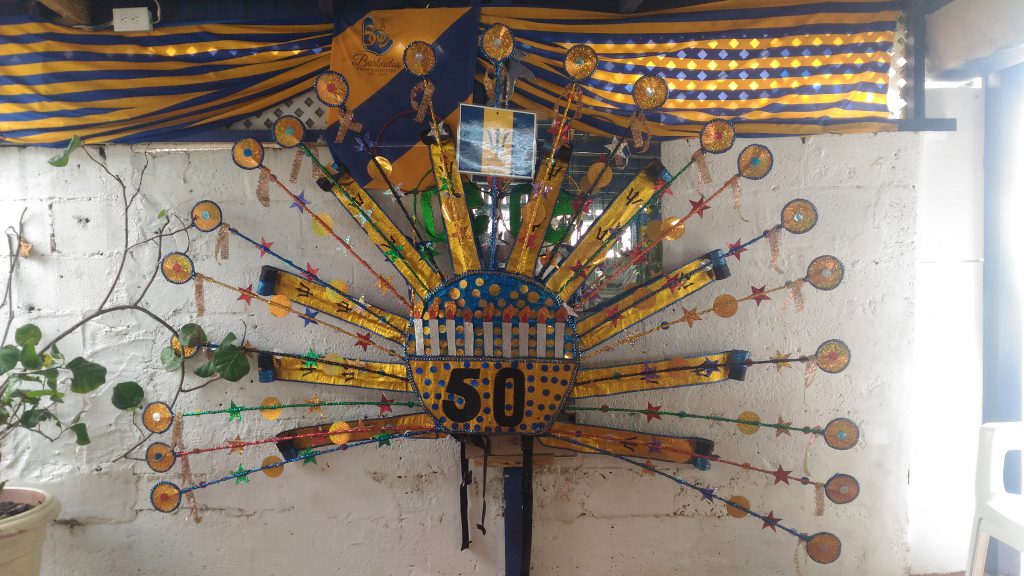
“Your boat is adrift! It’s in the middle of the bay! It’s adrift!”
I had just bought Pierrick an ice cream and was trying to put the change back into my wallet. Zeyno frantically spoke through my mobile that I was squeezing between my shoulder and my ear. “Dominique is on your boat. He hung fenders.”
“What’s going on?” Pierrick asked.
“Zeyno says that our boat is adrift and is in the middle of the bay. That Dominique has hung fenders.”
“Tell her to tell him to release more chain.”
“I can’t speak to him now,” answered Zeyno who could clearly hear Pierrick through my phone’s mic. “He’s on your boat. He won’t hear me.”
I tell her, “OK, we’re on our way. We’re about 30 minutes away. We’ll be there as quickly as possible.”
“30 miniutes! Julie, do you understand that your boat is in the middle of the bay?”
“We’ll be there as quickly as possible.”
This was Saturday, 28 January. Hugo and Pauline had left for Tobago on the 24th and Clément left for France the day after. Pierrick and I had decided to rent a car to visit the island. It appears that back luck befalls us as soon as we leave a certain radius from the boat. We had plans for the entire day. First, a stop at Earthworks to have a look at some Barbadian pottery. Then, a drive along the Western Coast. I wanted to cut inland at the North of the Parish of St Peter’s to visit St Nicholas Abbey, but the place lets out its space for functions on Saturday, so is unfortunately closed to tourists. Barbados has a number of gardens and nature reserves. I had decided on Hunt’s Garden. We would then drive to Bathsheba and admire the Super Bowl before driving back to Bridgetown via the Eastern and Souther Coasts. Needless to say, that’s not how the day played out.
We had just had a cheap & cheerful lunch at the Fisherman’s Pub in Speightstown. Before that we had visited the Gallery of Caribbean Art and had been to Earthworks on our way North. Now, we had to rush back to Bridgetown, find parking, get on our dinghy and motor our way back to our boat, wherever it might be.
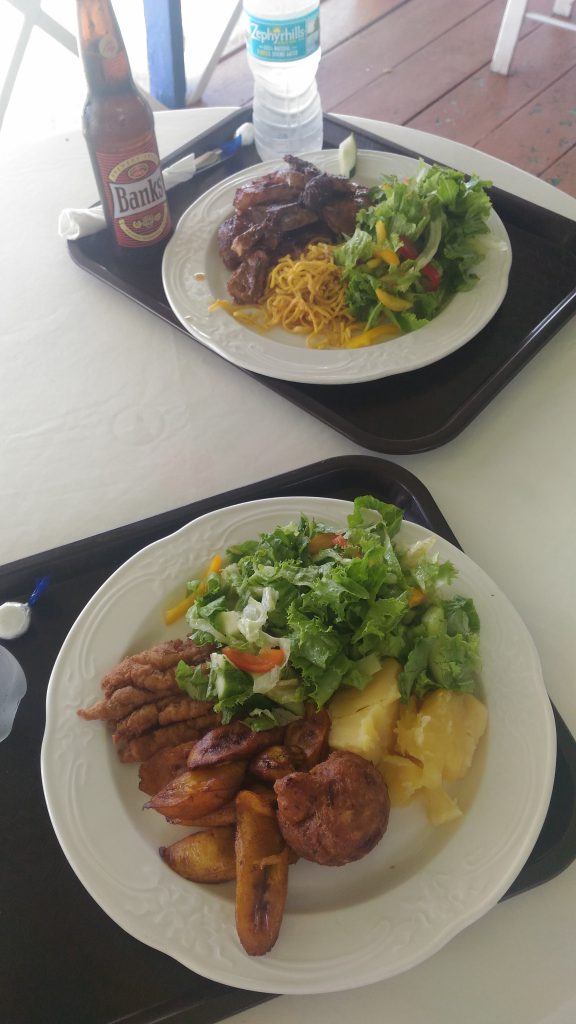
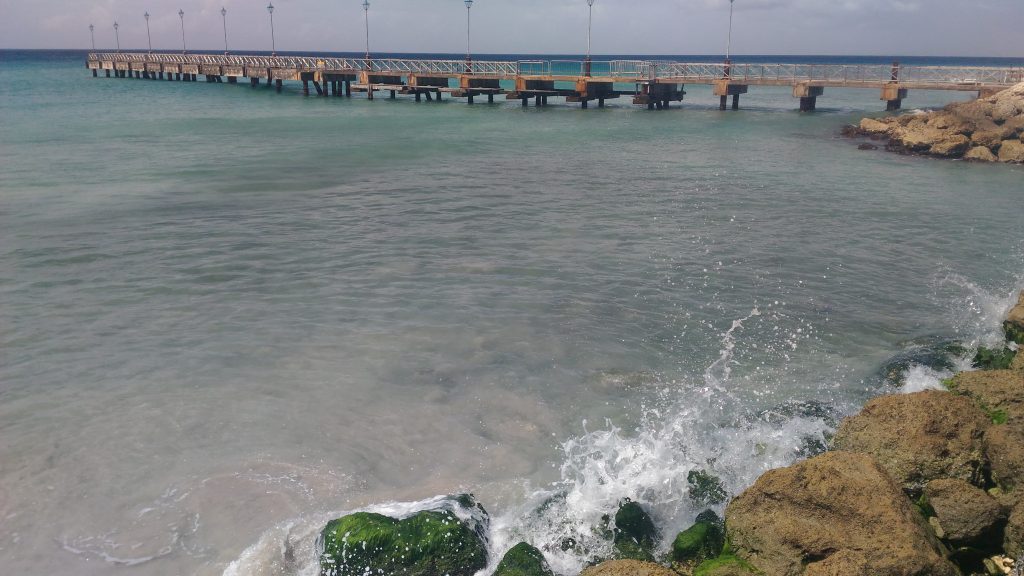
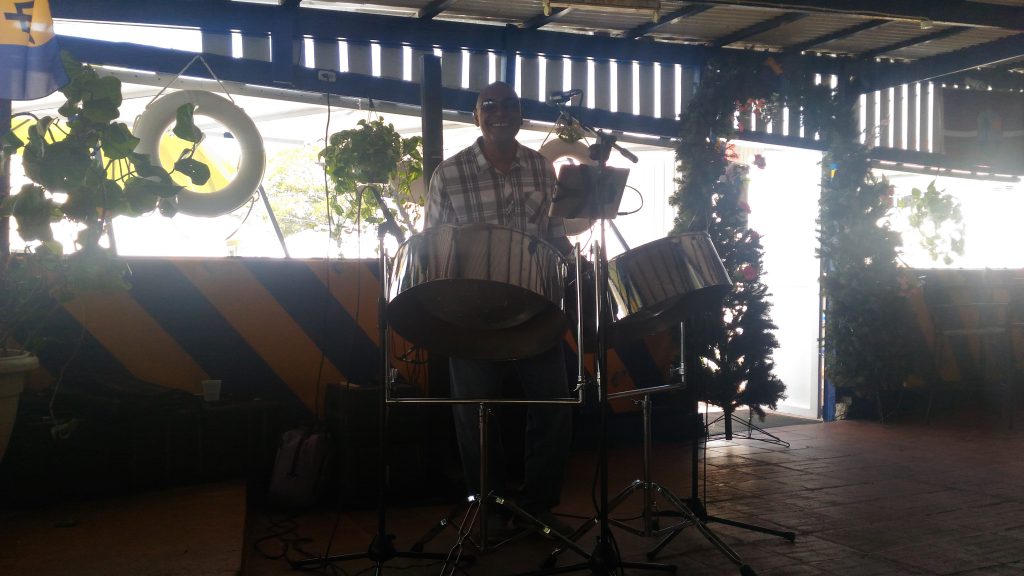
I suspect that Zeyno tends to exaggerate a bit. I wondered what she meant, exactly, by “in the middle of the bay.” Surely it wasn’t that bad?
As we rounded the corner out of the careenage and entered Carlisle Bay, there was our boat, floating next to the military vessel that was anchored at the outer part of the bay. When we got on board we saw that Dominique had released chain to our main anchor and dropped our second anchor off our starboard hull. Slow Motion was secured.
Once he saw us arrive, Dominique got on his dinghy and came to join us. First, we had to lift the second anchor. It was impossible to pull it up manually so we had to pull the chain all the way to the back of the boat to wrap it around a winch. This worked, but not without leaving the front bar severely scrapped. We then had to re-attach the “patte d’oie” on starboard, which Dominique had to remove to secure the second anchor. Then, we motored the boat back to its place in the anchorage and let 40 meters of chain drop.
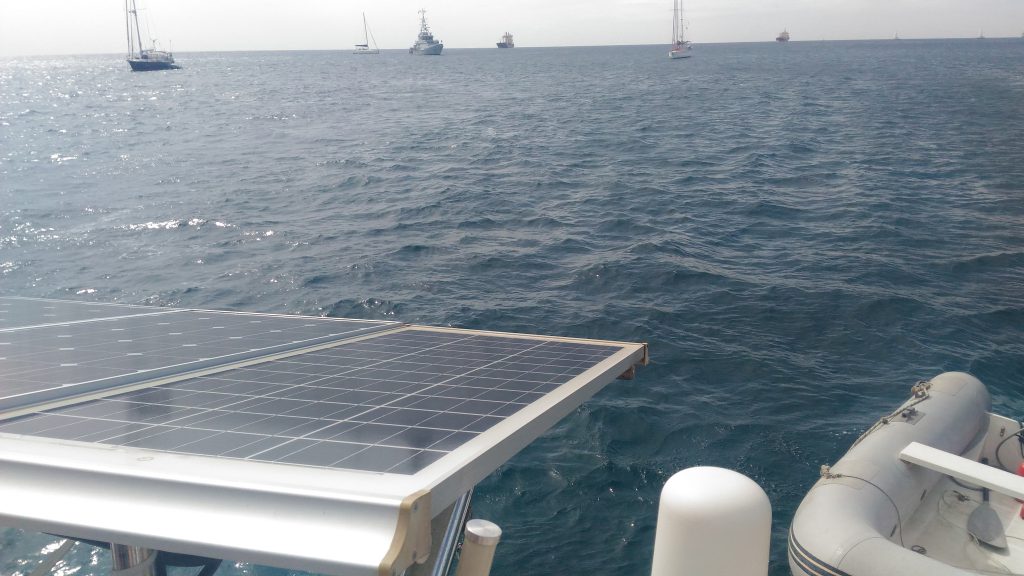
I had to discuss this with Pascale to understand why we went adrift. Pascale and Pascal are a French couple who work for Jimmy Cornell’s Atlantic Odyssey Rally. I had met them in Santa Cruz, Tenerife, at the departure of the second group of the season. I became friendly with Pascale, who managed the room where I gave some yoga classes, and was happy to run into them at the Historical Society Museum in Bridgetown. They were in Barbados to coordinate the arrival of the third group of rally sailors. They lived on a boat for 7 years and are very knowledgeable. Pascale explained to me that if we were anchored short, meaning with not much chain, about 15 meters, if swell comes in from the sea a boat can find itself above its anchor with a straight chain and, when at the tip of a swell, can pull the anchor off the sea floor. The boat, no longer anchored, then drifts out to sea with its chain and anchor trailing behind.
In my sailing life, I have heard of 2 schools of thought when it comes to anchoring. The first is to let drop 3 times the depth of the water. In 5 meters of water you would drop 15 meters of chain. The second is to let drop 3 times the length of your boat. Our boat is 12 meters long, so that would amount to 36 meters. Up until Barbados, I didn’t understand why there are 2 schools of thought on the matter. Now it’s clear. While anchoring in the Mediterranean where there are many vessels in any given bay, sailors anchor short to be space efficient. When anchoring in the Atlantic where space is less of an issue, sailors let their chains drop generously. We have learned our lesson; from then on, we have anchored with 35-40 meters of chain.
Once that drama was out of the way, we invited Zeyno and Dominique to join us to visit Hunt’s Garden, which was lovely. Hunt is, according to the Garden’s ad in travel guides, a “legendary Barbadian horticulturist.” We met him at the end of our visit. He was entertaining guests and was a bit tipsy. He seemed more British than Barbadian. He seemed like a British man who found a spot of land in Barbados and created an exquisite garden, and then opened it up to the public to make some money off of it. I write this without any cynicism. I think it’s a great plan! Hunt certainly seemed happy. And we certainly found the 15 EUR entrance fee worth it. Not only is his garden beautifully laid out with tropical trees and flowers, not only does it have fountains flowing over in gentle burbles and soft classical musical to fill the sound space, it is a canvas of multiple greens doted by beautiful contrasting colours. After almost 3 weeks at sea where all we saw where shades of blue with some oranges and pinks at sunrises and sunsets, we all agreed that the beautiful greenery of this garden was a balm to our eyes. It touched our sense of aesthetics. It aroused our sense of wonder.
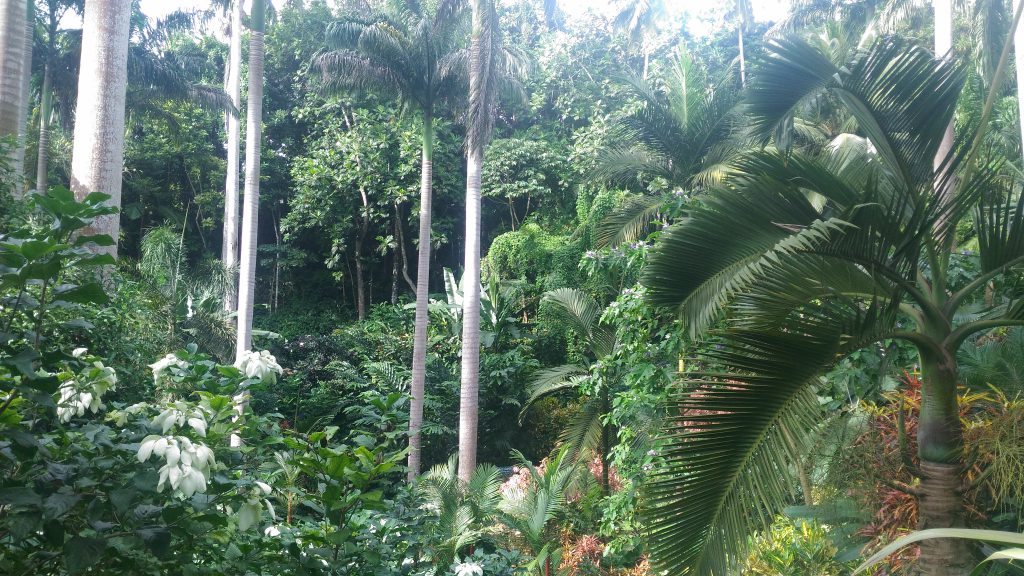
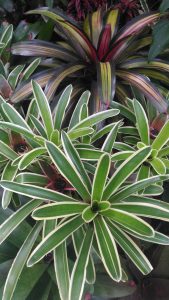
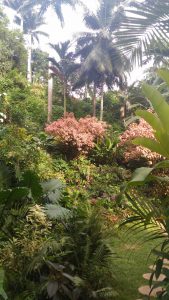
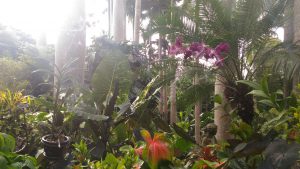
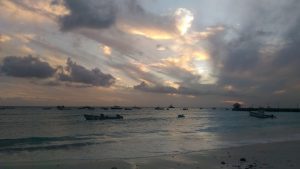
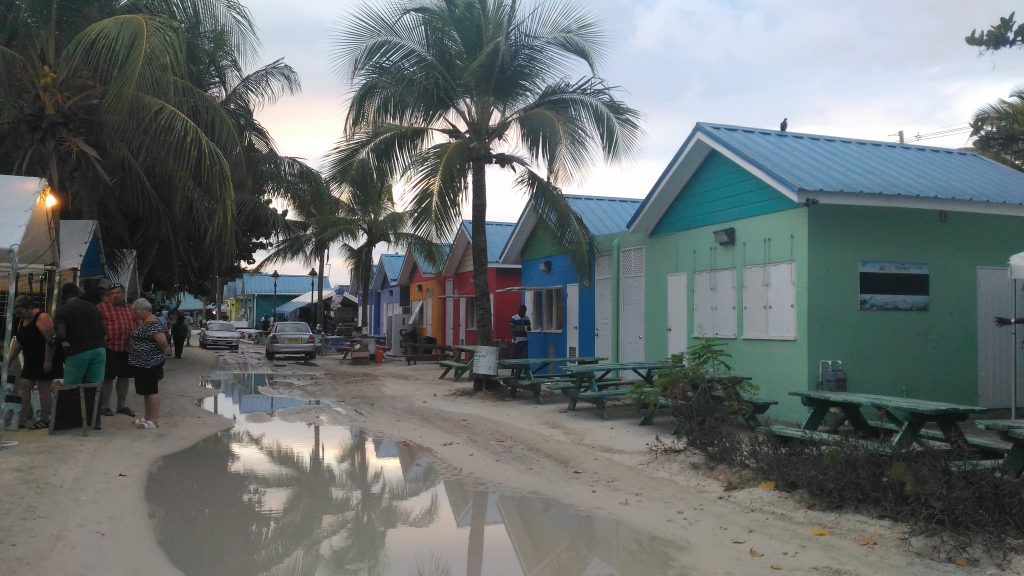
We drove to Bathsheba and admired the wild Atlantic Coast, and then brought them to Oistins. Pierrick and I had been to the Oistins fish fry the night before. My friend Camille – a wonderful woman I had the honor of meeting while living in London and who is originally from Barbados – hooked us up with Gerald, one of her secondary school friends. He picked up us in Bridgetown and drove us to the Southern Coast. He showed us how things proceed at a fish fry and brought us to the best stall (according the locals!) where we waiting up to an hour in line drinking beer and wine to finally pay for a Styrofoam dish filled to the rim with fried fish (note, not deep-fried), rice and vegetables covered in a magic Caribbean sauce. Then, you must find a spot at one of the long picnic tables to devour your meal. While in the cue we made friends with a mother-daughter pair from Thunder Bay. It’s all very relaxed and no-pretense, and the food was delicious.
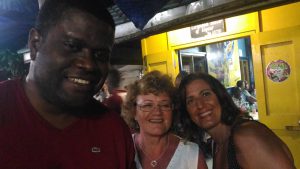
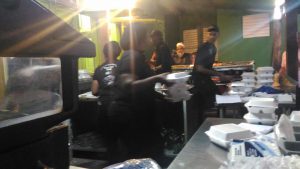
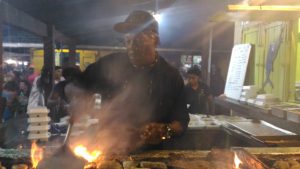
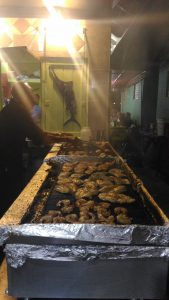
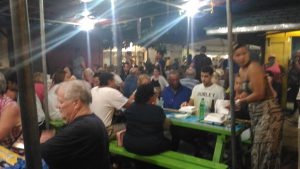
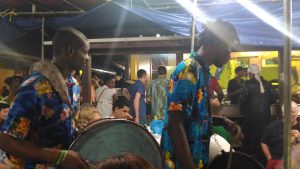
Meeting a local while on location gave me an outlet to ask a bunch of questions, to which Gerald graciously obliged. For example, I was surprised when we first arrived in Barbados at the number of Canadian banks everywhere. TD. CIBC. Royal Bank. Bank of Nova Scotia. “What’s up with that, Gerald?” It appears that the Barbadian government is much impressed with the Canadian banking system. Case in point, how Canada faired well during the 2008 recession. And apparently the American banks didn’t hold up to certain regulations. All in all, Canada was in and the US was out. We also discussed the marine industry. Camille hadn’t told me that Gerald is a naval engineer – Pierrick’s dream job! Turns out, there is no marine industry in Barbados. The West Indies University offers every type of engineering course except naval. He had to go to the UK to study, and he will be returning soon to complete his PhD. It appears that the Barbadian government does not see the long-term benefit of developing a proper and affordable port with naval services for the pleasure vessels. Deep Water Harbour welcomes cruise ships. There are fishing ports for the locals. There is only one port for pleasure vessels, Port St Charles North of Speightstown, that is rather expensive and has no services. It’s a pity as Barbados is a good landing point for cross-Atlantic journeys, hence there’s a big potential to service boats that have experienced some wear and tear along the way.
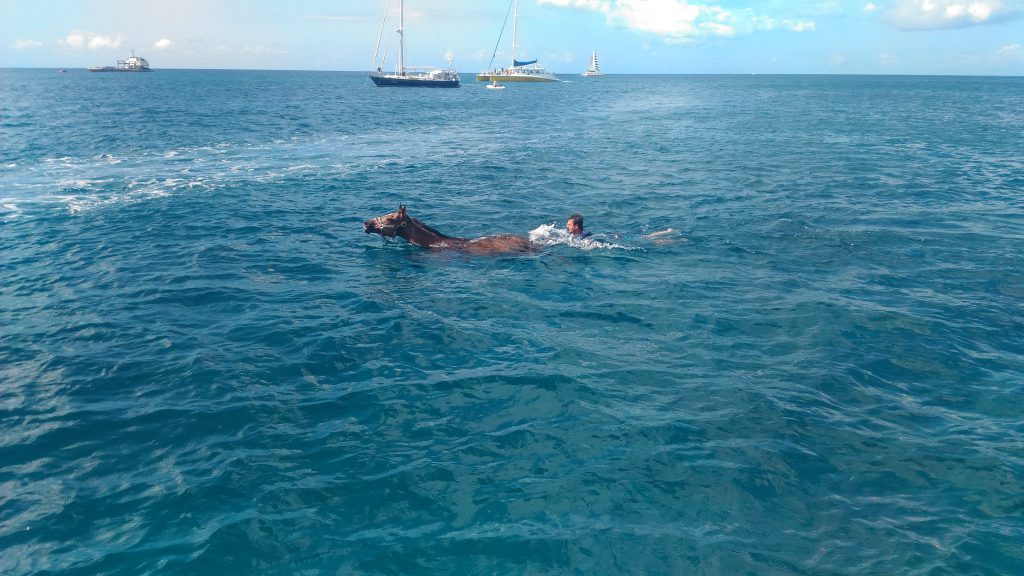
Then again, some sailors might avoid getting work done in Barbados for a salient reality to the island: everything is expensive! Maybe not Cabo Verde expensive, but the place can leave a deep hole in your budget. Food is especially expensive, and not just restaurant food but store-bought items. Iceberg lettuce seems to be for the rich. A liter of milk costs almost 4 EUR. We know sailors who had to lay down over 70 EUR to get 15 kilos of clothes washed. We found a cabbie who drove us to the outskirts of Bridgetown to a small dilapidated one-room building that served as a laundrette. When I saw the place, my first reaction was not to get out of the car. But I did, and the man was very nice and washed our 10 kilos of clothes for 30 EUR. We saved on wash and food but cough up 100 EUR that day for the cabbie to drive us out to places that were more affordable.
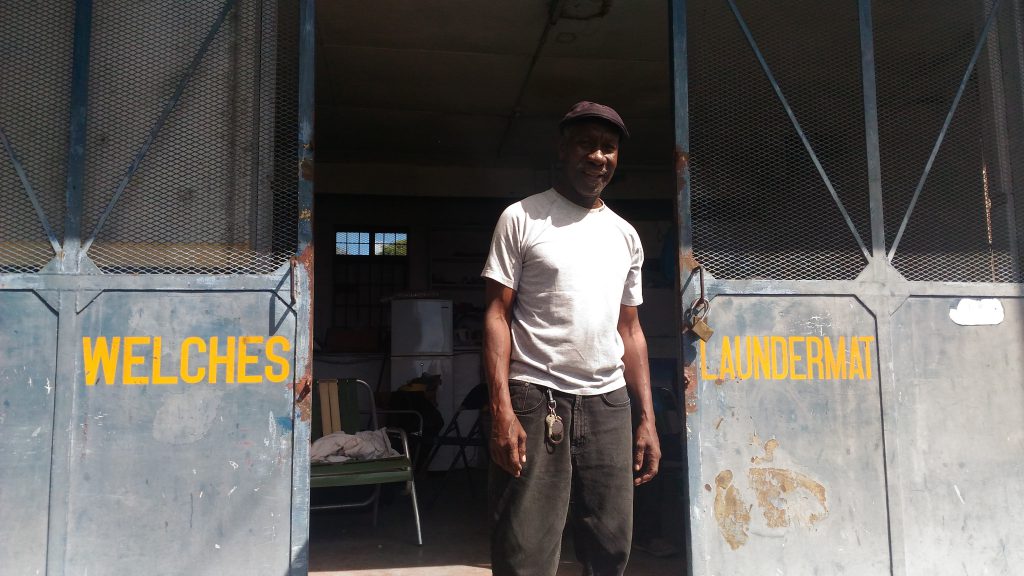
In Barbados, the prices are prohibitive. So much so that Zeyno has told us that had she to do it again, she wouldn’t land in Barbados. Their stocks were very depleted. They needed to stock up on water and some staple food items, but doing so in Barbados busted their budget. This is a sad reality. Still, I am happy to have visited the island, home of my friend Camille. At the Historical Society Museum I bought several books about the island and from Barbadian authors to get a better grasp of this society and its history.
Pierrick and I left in the afternoon of Sunday, 29 January. To be honest, we almost fled. It would appear that Pirates’ Cove, the seaside bar we patronized for its affordable lunches and free Wifi, is currently the hot & happening place. This means parties, and Bajan parties are loud. It was so loud that it felt like a man screaming to music was on a boat next to ours, screaming onto our deck. We were anchored a good 400 meters from the beach. We endured it Friday and Saturday nights – and by night I mean from around 11 PM to 5 or 6 AM – but when they started up again Sunday afternoon, we knew our time in Barbados had come to an end. Next stop: Le Marin, Martinique.
